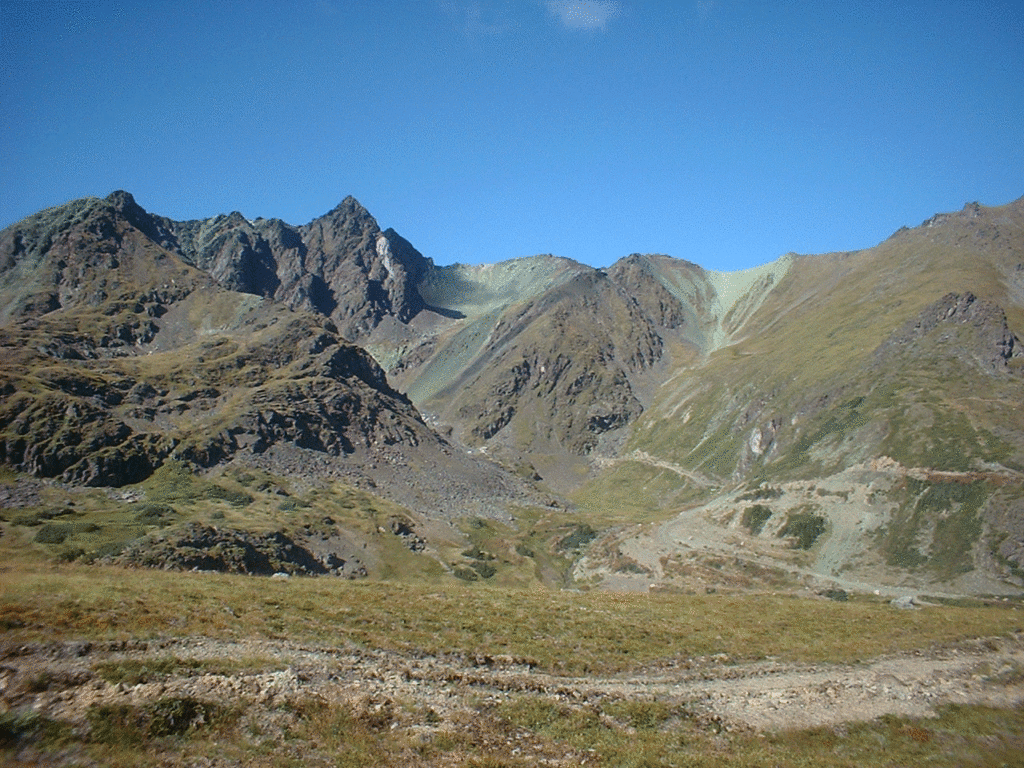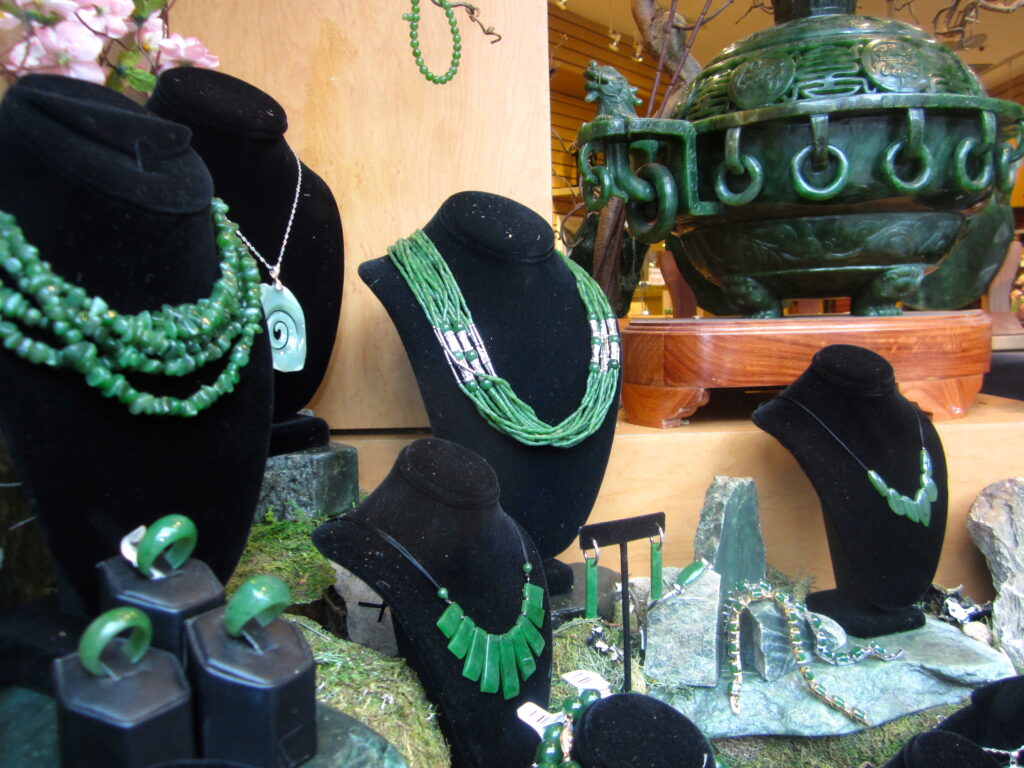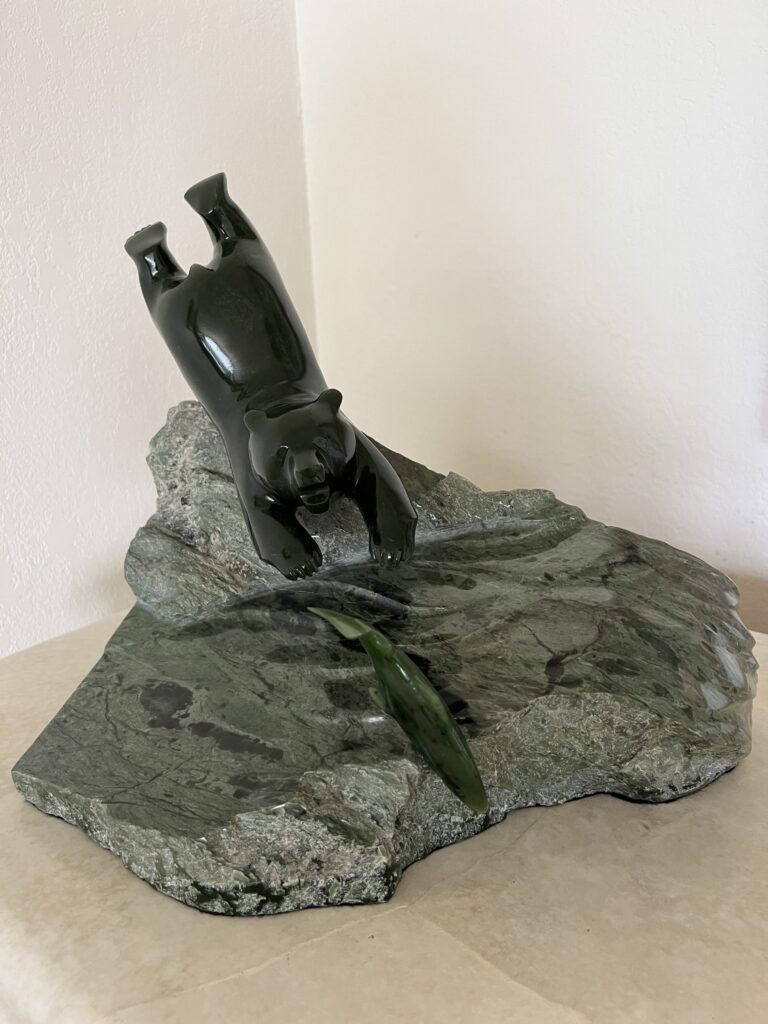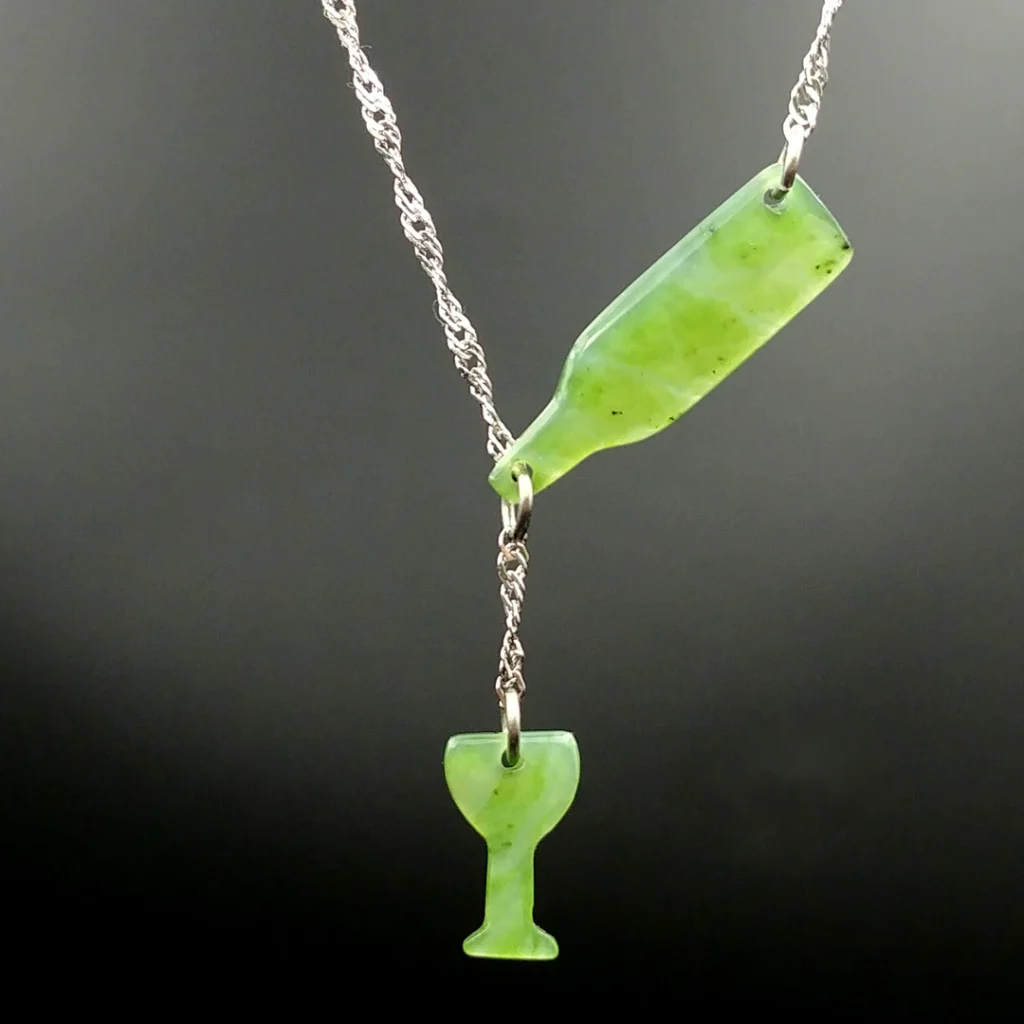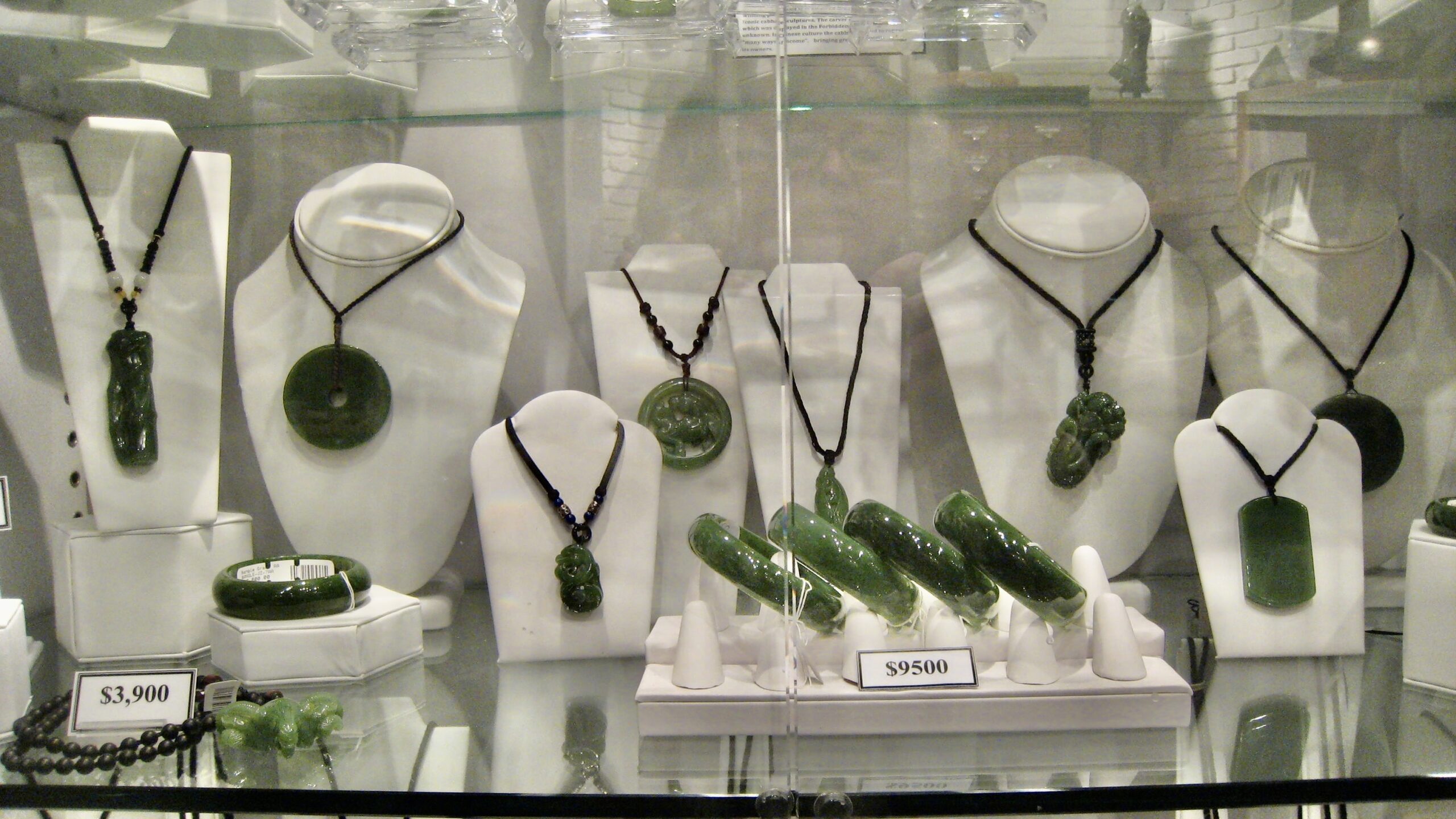I am looking at a jade bangle with the price tag of some car, and that bracelet will outlast it.
On a trip to Beautiful British Columbia, you might wonder whether this is really the place to buy authentic jade. I never visited a jade extraction site, but what I learned about the official stone of Canada’s westernmost province might help you appreciate this mystical gemstone.
If you think that jade comes from China where it has been a spiritual symbol for 6,000 years, think again. Today, the jade sold in China is mostly Canadian. Three-quarters of the global demand for jade is supplied by deposits in British Columbia (BC).
BC Jade
It all begins with a treacherous trip to the jade mountains located deep in the wild. The extraction is limited to summertime when the ground is no longer frozen. When I contacted Jade West for some photographs, the world largest supplier of green nephrite, owner Kurt Makepeace graciously sent me a folder of photographs that were worth several thousand words. I then learned more when I visited stores in Vancouver and Victoria.
In Victoria–BC capital located on Vancouver Island–you will find jade in stores selling BC art and crafts. The Jade Victoria store on Government Street, a pedestrian thoroughfare filled with shops, is a reliable outlet. And Jade Vancouver on Water Street is located within walking distance of Canada Place, also the cruise ship terminal.
Know Your Jade Before Shopping for Jade
Mineralogists will tell you that jade is the commercial name for either nephrite or jadeite, two similar stones with two different chemical structures. In BC, the jade deposits are green nephrite, the toughest stone in the world. Yes, more robust than a diamond.
Green jadeite is found in Burma/Myanmar. As a comparison, black nephrite comes from Australia and white nephrite from Siberia. In New Zealand where the green stone is a godly mineral for the Maori people, a treaty limits its extraction.
What about China? You might ask. Today, most of the jade extracted in China is white, brown, or olive green. China has run out of good quality green nephrite, yet the demand is unprecedentedly high. The young middle class rediscovered jade as a fashion statement while investors seek a reliable saving haven. The price of jade in China is 10,000 times what it was thirty years ago, and still rising.
All That Is Green Is Not Jade
When traveling anywhere, be aware that garnet jade is green garnet, not jade. BC jade is dark green, lustrous, and smooth as glass. Jade is the official gemstone of BC, and Jade West warehouses its rough boulders in Vancouver: it’s unlikely that you would be sold fake jade.
Note that Canadian jade is never chemically treated. Quality rating is as follows:
- AA – very best (Polar Jade)
- A – high
- B – for carving
- C – for tiles
Jade for Jewelry
Jade is an intriguing stone with a tactile appeal. It’s cool to the touch and soft when polished. However, only experts can identify fake jade. Always ask for a certificate of authenticity.
The prices for jade bangles, favored by Chinese women as a symbol of protection, vary from $200 to more than $10,000. A jade bead bracelet costs less: $100 and up.
Pendants in sculpted or smooth modern designs start at $60 with a stainless-steel chain; more for silver and gold. Earrings with sterling silver sell for $30 and up, and from $200 with 14K gold. Rings: $10 for a single narrow band, $200 and up when mounted in 14K gold. Cufflinks set in stainless steel: $60.
If you like green, consider a jade-tiled bathroom, or settle for a towel bar ($350), a soap dish ($50), hardware components such as single switch plates ($70), or drawer handles ($20).
Jade for Souvenirs
Small sculptures remain affordable trinkets. The jade is from BC, but it’s usually carved in China. Prices are still a matter of size and quality and are moderate in souvenir shops.
Bear carvings are best-selling mementos. A 1.5-inch bear sells for $30 whereas a larger one, with a fish in its mouth, and fitted on a marble or granite base, sells for $250. If you are into animals, a rearing or prancing horse sells for $70.
Other items might be a desk clock ($70), four golf tees in a wood box ($50), or a cribbage board ($120). Don’t overlook Christmas ornaments ($50), buttons ($8 each), key chains ($5 and up), and animal bottle stoppers ($15). Canes with a choice of handles start at $75 and are said to have a soothing effect.
Oriental-style carvings appropriately reflect the associations of jade and the Far East, as well as BC’s multi-cultural communities: $300 for a 3-inch-high Buddha sculpture, $175 for a wire-wrapped jade tree, $500 for a detailed good fortune screen on a wood stand.
Jade for Collectors
Thousands of years ago, jade was used for tools. Today special tools are used to carve jade into sculptures.
Collector or not, you will enjoy displays of green nephrite sculptures in art galleries. If you plan to have High Tea at the legendary Empress Hotel in Victoria, the Art of Man Gallery (next door) showcases its extraordinary jade sculptures. With names like story titles, they speak for themselves.
Note
Not to be ignored in the jade extraction business are the First Nations of the Northwestern Territories. According to The Canadian Press, the Tahltan Nation has an “excellent relationship” with most mining companies operating in its unceded territory but opposes mineral exploration by those that disregard culturally sensitive areas.
Original article Buckettripper – Revised 2022
